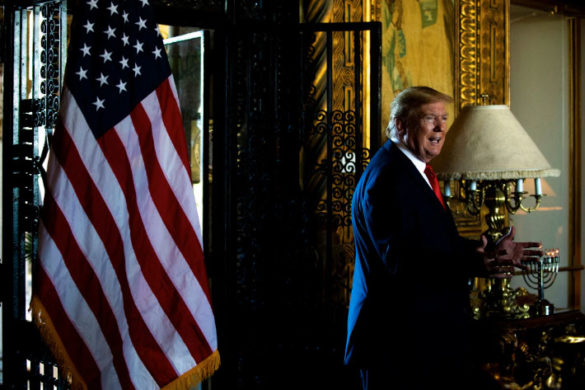
Trump Says U.S. and China Will Sign Trade Deal in January
President Trump said that the ceremony would be held at the White House and that he would go to Beijing to continue discussions about a Phase 2 deal.
WASHINGTON — President Trump said Tuesday that the United States and China would sign a “very large and comprehensive” trade deal at the White House on Jan. 15, though exact details of the agreement were not released.
The signing would cement the first phase of an agreement that took nearly two years to negotiate and would formalize a trade truce between the world’s two largest economies. The president, who announced the date of the ceremony on Twitter, said that “high level representatives of China” would attend the signing ceremony and that he planned to travel to China “at a later date” to begin talks on the second phase of the agreement.
Text of the agreement, reached in mid-December, has not been made public, and its exact contents have yet to be fully vetted by experts or the many businesses that have suffered from the protracted trade fight with China. The deal would reduce only a small portion of the tariffs that Mr. Trump imposed on $360 billion worth of Chinese goods, leaving many levies in place.
Officials from both countries have said the agreement includes commitments from China to increase purchases of American farm and energy products, places limits on Beijing’s ability to weaken its currency and provides enhanced protections to American companies doing business in China. The agreement also would reduce tariffs on about $120 billion worth of goods, and forestalled new tariffs that were scheduled for Dec. 15.
In announcing the agreement, the United States said that China’s farm purchases were expected to grow to at least $40 billion annually over a period of two years and that total exports of food, energy, manufactured goods and services to China would increase by a total of $200 billion. Chinese officials, however, have remained vague when describing what they agreed to buy and on what timeline.
Details on China’s purchase commitments could be left out of the text of the agreement that is made public because officials have been concerned that commodities markets could be distorted if such information is released. The deal is expected to have some flexibility so that China can tailor its purchases to market demand.
Peter Navarro, the White House trade adviser, told CNBC on Tuesday that the American negotiating team was working out the final details before the signing, which had been expected during the first week of January.
“We’re just waiting for the Chinese translation of the 86-page agreement,” he said.
The trade dispute between the United States and China rattled the world economy during the last 19 months as both countries raised tariffs and other trade barriers while negotiations sputtered and stalled. By breaking the agreement into pieces, China was able to avoid additional tariffs and Mr. Trump secured a policy win heading into his re-election campaign.
Yet the first phase of the agreement does not address many of the most significant concerns that the United States has with China’s economic practices, particularly its industrial policy and subsidies of state-owned enterprises. Mr. Trump has said those issues will be addressed in future talks and has said the remaining tariffs will continue to exert pressure on China to accede to America’s demands.
Mr. Trump announced the signing just before markets opened on Tuesday. The S&P 500 index in the United States was up slightly by the end of the day’s trading.
Michael Pillsbury, a China scholar at the Hudson Institute who advises the Trump administration, said translating the text of the agreement has been complicated because the United States wants to ensure that the commitments are legally binding rather than just statements of what China’s intends.
“We’re entering a period now, before the signing, to see if it really gets locked in or they renege again,” Mr. Pillsbury said, suggesting that Mr. Trump publicized the date of the ceremony on Twitter to put additional pressure on China.
Mr. Pillsbury suggested, however, that Mr. Trump believes his relationship with Mr. Xi will be a political asset in 2020 as he makes the case to voters that he has rebalanced America’s relationship with China.
Source: https://www.nytimes.com/2019/12/31/us/politics/trump-china-trade-dea.html